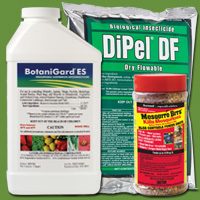 Although some people use the term “Praying Mantises” as a plural for Praying Mantis, for our purposes here we will be calling them “Praying Mantids”, as it just makes things simpler. After all, “Praying Mantis” refers to an insect that belongs solely to the genus Mantis, whereas a Praying Mantid is an umbrella term for all types of mantids.
Although some people use the term “Praying Mantises” as a plural for Praying Mantis, for our purposes here we will be calling them “Praying Mantids”, as it just makes things simpler. After all, “Praying Mantis” refers to an insect that belongs solely to the genus Mantis, whereas a Praying Mantid is an umbrella term for all types of mantids.There are three main species of mantids found in North America-the Carolina mantid (Stagmomantis carolina), European mantid (Mantis religiosa) and Chinese mantid (Tenodera sinensis). The Carolina mantid is the only species that is native to our continent, the other species were introduced either accidently or intentionally (depending on whose account you choose to believe) sometime before or around the turn of the 20th century. Many people consider the introduced species to be invasive, while others point to their long-term residency here as proof they have adapted and cause no harm. We will leave it to our readers to come to their own conclusions on this controversial subject.
 |
| Praying Mantises hatching - many more will follow! |
Mantids can be beneficial, but should not be considered as useful in pest control as insects such as green lacewings or ladybugs. There are several reasons for this: one is that mantids will not develop a large population in a specific area that could combat a pest infestation. This is largely due to the fact that they are enthusiastic cannibals. Mantids are just as happy to eat their own as they are to eat other insects. Once hatched, they usually try to get away from their siblings as quickly as possible (a phenomenon that is all-to-familiar for many humans). Additionally, since they are voracious eaters, they need plenty of their own space to meet their food needs. Yet another factor that make them the less-than-perfect beneficial is that their murderous tendencies are unrefined. They will devour a honeybee just as quickly as grasshopper, making them a threat to insects that are considered desirable.
Like any other insects, pesticides can seriously reduce the number of mantids in an area. If you must use a pest control agent, we suggest you use products containing Bacillis thuringiensis and insecticidal soap targeted for soft-bodied insect control. These products have little effect on mantids.
To develop the best possible habitat for mantids, remember to not over-groom your garden. These predators need vegetation to provide cover for their hunting and for a place to lay their oothecas in for next year.
- Contributed by Pam at ARBICO Organics
















